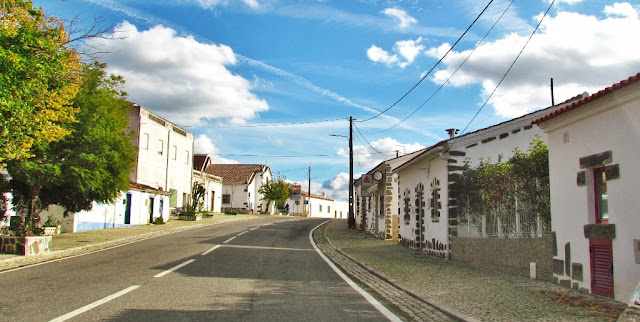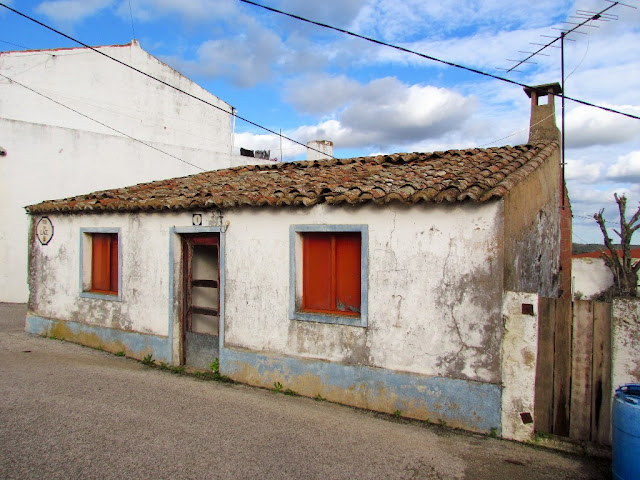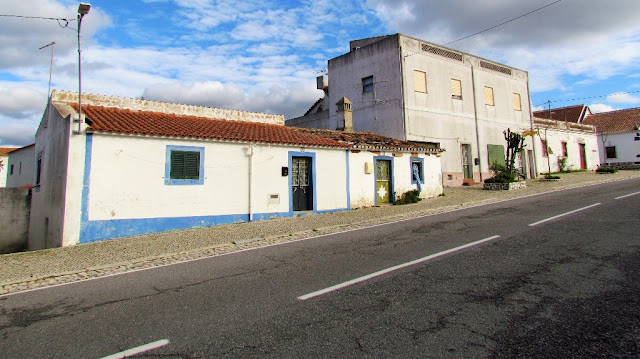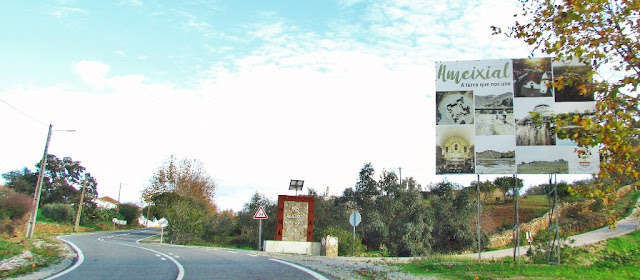AMEIXIAL (LOULÉ)
37° 21' 51" N; 7° 57' 49" W
Ameixial is a Portuguese parish in the municipality of Loulé, with an area of 123.85 km² and 381 inhabitants (2021 census). Its population density is 3.1 inhabitants/km², which allows it to be classified as a Low Density Area.
The village of Ameixial is located in Serra do Caldeirão, on the northern edge of the municipality of Loulé, on the border with Almodôvar, Alentejo. It covers numerous villages, such as Besteiros, Vermelhos, Revezes, Corte João Marques, and Corte de Ouro, among others. Most of the region drains into the Ribeira do Vascão river basin, one of the main watercourses in the Algarve, which is evident here due to its length and width, as well as all the natural and cultural heritage associated with it. The land occupation is mainly forestry, with several agricultural spaces – especially in the riverside valleys – with a predominance of cork oak and holm oak. As a result of this fact, there is also an economic activity directly associated with the exploitation of cork and another, indirectly, through the production of medronho brandy and honey. Herding is another activity present in this region, especially with Algarve goats.
The characteristic landscape of this parish is, to a large extent, similar to that seen in the rest of the mountains, with extensive forests of cork oak, rockrose, gorse, heather, and arbutus groves. To the north, however, in the vicinity of Vascão and Alentejo, the relief becomes less rugged and the holm oak forest acquires special relevance. There is a greater presence of agricultural fields, especially for pastures, and in the river valleys, we can still find several active traditional vegetable gardens. Ribeira do Vascão is a distinctive mark in this region, favoring the occurrence of a rich fauna and flora, internationally recognized for its inclusion in Rede Natura 2000, at the “Guadiana” Site and at the Ramsar Site. Around 525ha of this parish are included in this European network of protected spaces due, in particular, to a set of protected species, such as the Iberian Lynx, the Otter or various autochthonous and migratory fish, such as the very endangered Saramugo, the Cumba or the Sea Lamprey.
The birdlife is quite rich in this area, with emphasis on the nesting of the Bonelli's Eagle, the Short-toed Eagle, the Eurasian Owl, the Nightingale or the Royal Warbler. In addition to these, we also highlight the irregular occurrence of Golden Eagles, Griffon Vultures, and even Imperial Eagles.
Cultural heritage
This is a region with a very interesting, even remarkable, cultural heritage. Particularly noteworthy is the archaeological component, which acquires a very special meaning here and which distinctively projects this region. This importance is due to the existence of a set of megalithic monuments, namely two dolmens or dolmens, the “Pedra do Alagar” and the “Anta do Beringel” – structures made of large stones covered by earth where the dead were buried, measuring approximately 5,000 years –, and the record of several stelae with writing from the Southwest – schist slabs where the first signs of written communication were recorded in the Iberian Peninsula –, dated between the 19th century and 19th century. VIII and IV BC Ameixial, together with Baixo Alentejo, constitutes the main area of archaeological finds of this nature, hence the expression “writing of the Southwest”. Apart from this heritage, emphasis is also placed on other relevant ancestral elements, such as burials in Bronze Age cists, Islamic settlements – as is the case with the origins of Azinhal dos Mouros -, among other sites, spread throughout the parish and along of the mountains there.
The villages
The evolution of Ameixial is closely associated with the history of accessibility to the Algarve, especially as it is located next to the main road link between this region and the rest of the country, enabling the movement of people and goods through the mountains. In the parish memories of 1758, in the description of the village, mention is made of three inns that served as support for travelers, rest for animals and any small repairs to continue the journey, which attests to the importance it already had as a connection point for the Algarve. to the Kingdom. In addition, there is a fuel supply station there, whose work dates back to the last century, an intervention by the former JAE – Junta Autónoma de Estradas, given the need to provide the village with support structures for travelers. . This project resulted in the original building, which is still preserved almost unchanged today, as well as the construction of several corner workers' houses and support buildings, whose architecture is very similar to that of that station. This is, in fact, another aspect to note in the region, in the small villages that dot the mountains: the evident presence of traditional architecture, based on the ancient arts of construction with schist and in some places, rammed earth. Although in most villages in the parish – like many others in the region – desertification has dictated its order and almost disappeared, it is still possible to find inhabited villages, relatively well preserved and with a range of cultural aspects of interest. A special reference to Corte de Ouro, with its circular haystacks and huts, Azinhal dos Mouros for its ancient history, Vermelhos for its once great economic importance or Corte João Marques for the fortress it hosted in the past.
Human activity
Human activity in this territory is ancestral and closely linked to forestry and agriculture. It is still that way today. Therefore, it is not surprising that there are several pastoralists in this land, especially goats and sheep for the production of meat and milk.
Cork activity is widespread, constituting one of the most important sources of income for local inhabitants, as well as the production of medronho brandy, with several distilleries in this parish. Beekeeping is another well-established activity in Ameixial, along with other small activities linked to agriculture.
💓💓💓💓💓
SEARCH IN ALPHABETICAL ORDER
IN THE DISTRICT OF FARO
💓💓💓💓💓
Return to mainland Portugal &
the Azores and Madeira islands

















































































































































































